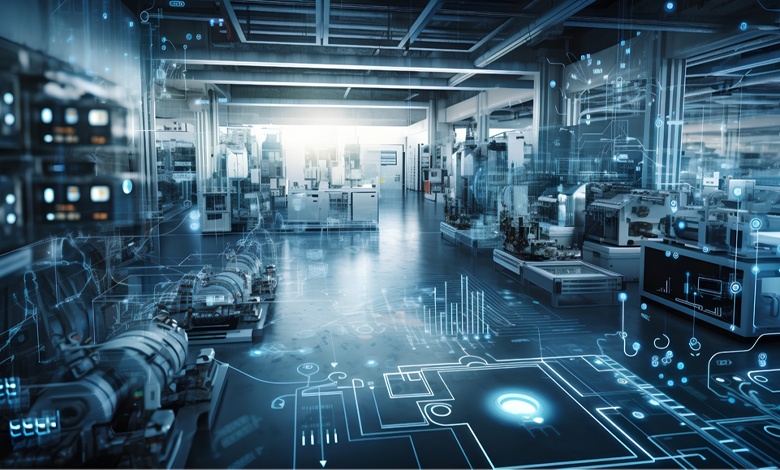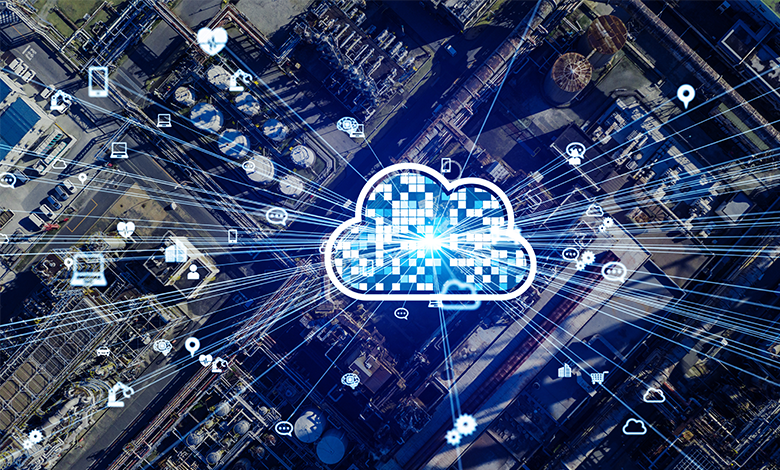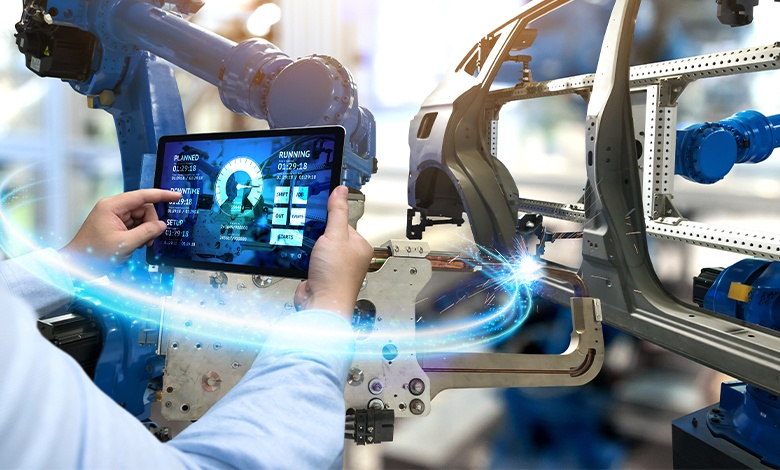Edge Computing
Edge Technology Fuels Efficiency and Drives Profitability

Given both the increasing volume of data and the need for businesses to process this data in real-time for scenarios like autonomous driving, augmented reality, or industrial applications, it's not surprising that the demand for edge computing is growing rapidly. From 2023 to 2028, it’s estimated the edge computing global market will see a compound annual growth rate (CAGR) of 15.7%.
As edge computing continues to reshape the data processing landscape, this guide provides a comprehensive overview, including a discussion of edge computing infrastructure, key features, implementation considerations, security concerns, featured edge computing solutions, and more.
Why Is Edge Computing Important?
As a result, edge computing has become an important computing paradigm because it effectively addresses latency, bandwidth, and data processing challenges. In applications where rapid decision-making is paramount such as autonomous vehicles, smart cities, and IoT devices, edge computing is seen as crucial.
Edge Technology
Unlike traditional centralized cloud architectures, edge technology is distributed across various locations. This infrastructure typically includes edge nodes strategically placed at the edge of the network, and can include devices like routers, gateways, servers, and IoT devices. These nodes collectively form a decentralized computing environment that enables the processing of data in close proximity to where the data is generated.The design of edge infrastructure emphasizes the need for robust and scalable networks to facilitate seamless communication between edge devices to ensure reliable data transfer. Because edge computing scenarios often involve deploying infrastructure in diverse environments, from industrial facilities to remote locations with limited connectivity, edge infrastructure must be resilient and adaptable to varying conditions. It must also be able to provide storage, computing power, and networking capabilities to support applications demanding low latency, real-time processing, and autonomy.
The evolution of edge infrastructure is also closely tied to the integration of technologies such as 5G networks, which play a pivotal role in enhancing connectivity and supporting the high-speed, low-latency requirements of edge computing.
Edge computing Key Features
The key features of edge computing that distinguish it from traditional computing paradigms, include:Proximity to Data Sources
Edge computing systems are designed to operate in close proximity to the data source such as IoT devices, sensors, and local edge servers. This proximity minimizes latency and enhances the speed of data processing.
Real-time Processing
By handling computations at or near the source of the data generation, edge computing enables real-time data processing and swift decision-making, which is crucial for applications that require low latency.
Bandwidth Efficiency
Edge computing optimizes bandwidth usage by processing data locally. This reduces the need to transmit large volumes of raw data to centralized cloud servers for analysis and results in a more efficient use of network resources.
Resource Efficiency
Edge computing optimizes resource utilization by offloading processing tasks to local devices. This can lead to more efficient use of computing resources, particularly in scenarios where not all data needs to be sent to a central server for analysis.
Autonomy and Independence
Edge devices are capable of making autonomous decisions without relying on constant connectivity to a centralized service. This independence is valuable in scenarios where network connectivity may be intermittent or unreliable.
Scalability
Edge computing architectures are inherently scalable, allowing organizations to easily add or remove edge devices based on the evolving needs of an application. This scalability is crucial for accommodating changing workloads and expanding system capabilities.
Edge Computing Implementation Considerations
Implementing edge computing requires developing a comprehensive strategy to address both business and technical aspects. The strategy should align with organizational goals such as overcoming network constraints and ensuring compliance with data sovereignty regulations. Careful evaluation of hardware and software options from various vendors is also essential and should include consideration of factors like cost, performance, interoperability, and support.The deployment of edge computing initiatives varies widely and can range from localized computing to extensive sensor networks connected to the cloud. Monitoring of the edge network is essential for resilience, fault-tolerance, and self-healing capabilities, especially in instances where there are challenges related to accessing physical edge sites. Monitoring tools should provide visibility, easy provisioning, comprehensive alerts, and security measures to safeguard the installation and its data.
Additionally, to reduce the risk of connectivity issues, provisioning for backup connections and remote provisioning and management are essential. Physical maintenance, including routine replacements of IoT devices, is also critical.
Edge Computing FAQs
What is the main difference between edge and cloud computing?Edge computing focuses on decentralized processing closer to data sources, reducing latency, while cloud computing offers centralized storage and processing capabilities on a larger scale. However, cloud and edge computing can be combined to create a powerful hybrid model, where edge handles immediate processing while the cloud provides scalable resources for more complex tasks.
How does edge computing impact data privacy?
Edge computing enhances data privacy by keeping sensitive information closer to the source. This minimizes the risk of unauthorized access during data transmission. However, data stored in edge devices can include sensitive or personal data, making it essential to implement data protection and privacy measures such as encryption and anonymization, to safeguard the data. It's also important to comply with relevant data protection and privacy regulations, such as the General Data Protection Regulation (GDPR) and the California Consumer Privacy Act (CCPT), and to respect users' consent, preferences, and rights regarding their data.
What are the security risks with edge computing?
Edge computing can improve security by keeping data closer to the source and away from centralized servers. However, edge devices can be more vulnerable to tampering, malware, botnets, and denial-of-service attacks. Therefore, it’s important to update firmware and patches as well as use secure communication protocols, encryption, and proximity-based security. The use of firewalls, antivirus software, and intrusion detection systems can also help protect both devices and the data stored on the devices.
What types of applications benefit the most from edge computing?
Applications that require low latency and real-time processing such as autonomous vehicles, augmented reality, industrial automation, and smart cities, benefit significantly from being able to process large volumes of data at the edge. However, because edge computing is versatile, it can be used across almost any industry for a diverse number of computing needs and industries, including healthcare, retail, manufacturing, and more.
5 Key Edge Computing Trends Shaping 2025
Businesses across industries are already putting edge computing to work. Retailers use edge AI to analyze in-store customer behavior in real time, optimizing store layouts and enhancing the shopping experience. Banks deploy AI-powered fraud detection at the edge, identifying and stopping suspicious transactions before they escalate. Manufacturers leverage predictive maintenance, reducing equipment failures and minimizing costly downtime. These real-world applications underscore why edge computing is no longer optional—it’s a strategic necessity for companies seeking faster insights, stronger security, and greater operational efficiency.
As organizations look for faster, more secure, and cost-efficient ways to process data, edge computing is poised to become even more important. Here are five key trends shaping edge computing in 2025—and how your organization can harness them for a competitive advantage.

1. AI at the Edge: Smarter, Faster, and More Efficient
The AI edge computing market is experiencing explosive growth, expected to reach $53.18 billion by 2029, driven by increasing demand for real-time data processing, automation, and reduced cloud dependency. Businesses across industries are leveraging AI at the edge to enhance efficiency, security, and decision-making, enabling smarter operations without the lag of cloud-based processing.One of the biggest drivers of this trend is real-time AI inference, which allows businesses to process data locally for predictive maintenance, computer vision, and automation. Manufacturers are using AI-driven edge sensors to detect machine failures before they occur, cutting downtime and improving productivity. Retailers are deploying edge AI cameras to analyze in-store customer behavior in real time, optimizing layouts and enhancing the shopping experience. Additionally, the rise of TinyML and lightweight AI models is expanding AI’s reach into IoT devices, sensors, and embedded systems, making real-time analytics more accessible and cost-effective.
2. 5G-Enabled Edge Networks Accelerate Adoption
The expansion of 5G-enabled edge computing is transforming data processing, automation, and connectivity across industries. By 2028, global 5G mobile subscriptions are expected to reach 8 billion, creating a massive infrastructure for low-latency, high-speed data transmission.One of the most significant trends is the growth of private 5G networks for enterprises. Businesses are deploying dedicated 5G infrastructure to support edge computing at scale, reducing network congestion, latency, and reliance on external service providers. Smart factories are leading this transformation, using 5G-powered edge computing for autonomous robotics, AI-driven quality control, and predictive maintenance—improving efficiency and minimizing costly downtime. In healthcare, 5G-connected edge computing is enabling AI-assisted diagnostics, remote patient monitoring, and even robotic surgeries, where every millisecond counts.
The market for multi-access edge computing (MEC)—which integrates 5G and edge technology—is also surging. Valued at $2.8 billion in 2023, the MEC market is projected to grow at a CAGR of 37.2% from 2024 to 2032, making it one of the fastest-growing segments in edge computing. The combination of 5G and edge computing is particularly critical for autonomous vehicles, IoT, and smart infrastructure, where real-time processing and ultra-low latency are essential. As 5G networks expand, businesses that embrace 5G-powered edge computing will gain a competitive advantage in automation, operational efficiency, and digital transformation.
3. Edge Security and Privacy Become a Priority
As edge computing adoption accelerates, so do concerns about security and data privacy. Unlike centralized cloud environments, edge computing processes data closer to the source, increasing the number of potential attack points. To mitigate these risks, businesses are turning to zero-trust security models, which enforce a “never trust, always verify” approach to securing edge environments. This means continuous authentication, strict access controls, and real-time monitoring to prevent unauthorized access.Key security strategies include advanced data encryption, identity management, and AI-driven security tools. Encryption ensures that sensitive data remains protected both in transit and at rest, while identity and access management (IAM) solutions help verify users and devices before granting access to edge resources. AI-powered security tools further strengthen defenses by detecting anomalies, identifying potential threats, and automating responses in real time—critical for industries like finance, healthcare, and government, where compliance regulations are strict.
For organizations operating in highly regulated sectors, compliance remains a challenge. Many industries require stringent data sovereignty and privacy controls, making it essential to implement secure edge solutions that adhere to regulations like GDPR, HIPAA, and financial data protection laws.
4. Convergence of Edge and Cloud: Hybrid Architectures Emerge
Rather than replacing the cloud, edge computing is becoming a critical extension of hybrid cloud architectures, allowing businesses to process data both locally and in centralized cloud environments. A recent survey found that 82% of companies use a multi-cloud approach, and 90% of organizations will adopt hybrid cloud by 2027, highlighting the growing demand for flexible, distributed computing models.To support this shift, cloud providers are integrating edge computing into their services. Solutions like AWS Greengrass, Azure IoT Edge, and Google Distributed Cloud allow businesses to deploy workloads closer to end users, reducing latency and optimizing data flow between cloud and edge environments. These platforms enable companies to seamlessly move data between local edge nodes and the cloud, ensuring real-time processing while still leveraging the cloud’s scalability, AI capabilities, and centralized management.
The key benefit of a hybrid cloud-edge model is workload distribution. Businesses can process time-sensitive data at the edge while offloading long-term storage, AI model training, and large-scale analytics to the cloud. This balance helps organizations optimize performance, reduce bandwidth costs, and enhance security by keeping sensitive data localized when necessary. As hybrid architectures become the norm, cloud and edge computing will work together to power next-generation applications, automation, and AI-driven insights.
5. Sustainability and Energy Efficiency in Edge Computing
As businesses scale their edge computing deployments, energy efficiency is becoming a critical focus. Traditional cloud data centers consume massive amounts of power, and as edge infrastructure expands, organizations are seeking ways to minimize energy use while maintaining performance. This has led to the rise of low-power edge devices designed to process data efficiently without excessive energy consumption. These devices rely on optimized chip architectures, AI-driven power management, and lightweight computing models to reduce their environmental impact.Beyond hardware efficiency, companies are also investing in renewable energy and advanced cooling solutions for edge data centers. Many edge facilities are now being powered by solar, wind, and other sustainable energy sources, reducing their carbon footprint. Additionally, innovations in liquid and air-based cooling technologies are helping to lower heat generation and overall energy waste—a key factor for edge deployments in remote or high-density locations.
AI is playing a pivotal role in optimizing edge workloads for power efficiency. AI-driven automation can dynamically adjust processing loads, shut down inactive systems, and optimize data distribution to reduce unnecessary energy use. This ensures that only essential computing tasks are prioritized, improving efficiency without compromising performance. As businesses aim to meet sustainability goals, integrating energy-efficient edge computing solutions will be crucial in reducing both costs and environmental impact, while supporting scalable, high-performance digital infrastructure.
Harnessing Edge Computing for Smarter, Faster, and More Secure Operations
Edge computing is no longer a niche technology. With the rapid expansion of AI at the edge, 5G-enabled networks, hybrid cloud architectures, and sustainability initiatives, companies are leveraging edge computing to reduce latency, optimize workloads, and meet evolving industry demands. The growing adoption of zero-trust security models and energy-efficient edge solutions further cement its role in powering the next generation of digital transformation.Whether optimizing manufacturing operations, enhancing customer experiences, or strengthening cybersecurity, organizations must strategically integrate edge computing into their IT ecosystems to stay ahead in an increasingly data-driven world.
Exploring the Pros and Cons of Edge Computing
A Guide to the Benefits and Challenges of Adopting Edge Solutions
Edge computing has emerged as a game-changer, revolutionizing the way data is processed, managed, and utilized. By shifting the computing paradigm to the edge of the network, closer to data sources, edge computing offers a multitude of benefits that address the limitations of centralized architectures. Quite rightly, it is seen by the majority (73%) of senior IT and line-of-business (LOB) decision-makers as a strategic investment, according to IDC.However, edge computing isn’t without its challenges, especially around implementation. When assessing whether to adopt edge solutions or implement an edge computing network, both the pros and cons should be weighed carefully.
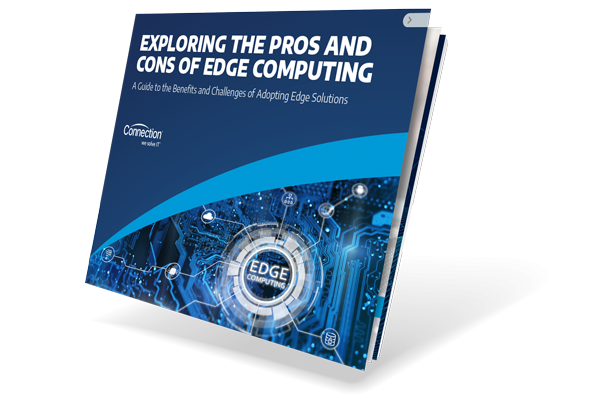

Securing the Edge
Best Practices for Edge Computing Security
As edge computing continues to be adopted across industries, especially for applications that require real-time data processing, there has also been an increased focus on edge security. The decentralized nature of edge computing creates a number of vulnerabilities, making robust security measures imperative.This guide explores the security challenges of edge computing and what the best practices are to increase edge computing security.
Lenovo ThinkEdge
The latest Lenovo ThinkSystem and ThinkEdge solutions, together with NVIDIA technologies, accelerate workflows and enhance collaboration. Learn how GPU-powered tools and solutions can help you stay competitive and keep up with project demands.
Edge AI Is Transforming Every Industry
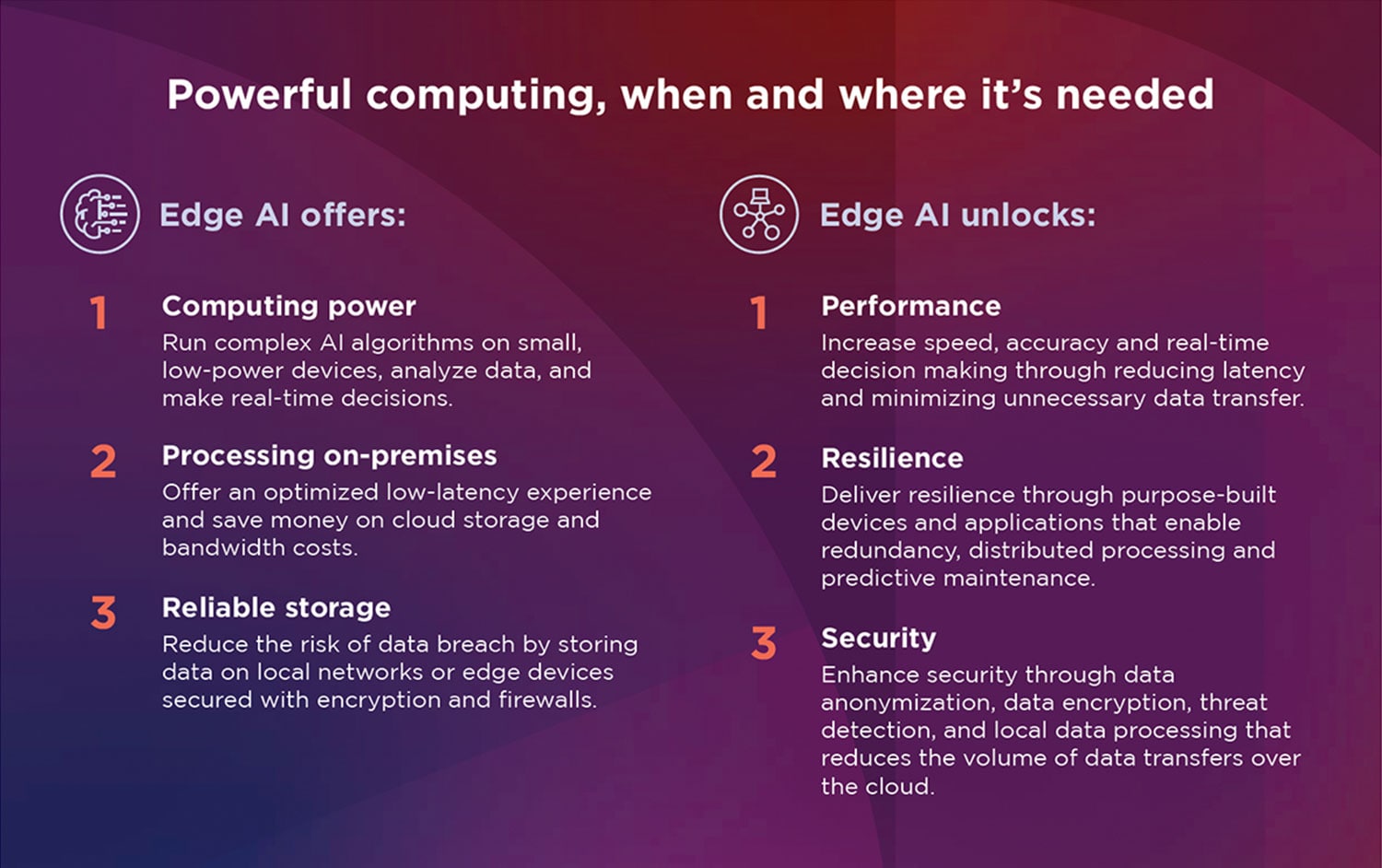
Greater Profitability at the Edge
The Combined Power of Edge Computing and the Cloud
Businesses are increasingly turning to innovative solutions to enhance their operations and boost profitability. Two powerful forces driving this transformation are edge computing and cloud computing. Individually, these technologies have proven their value in streamlining processes and handling vast amounts of data. However, when combined, they can unlock even greater levels of profitability.From manufacturing floors to healthcare organizations, retail environments, agricultural landscapes, and smart cities, there are numerous use cases where a combined cloud and edge approach has yielded greater efficiency, agility, and profitability.
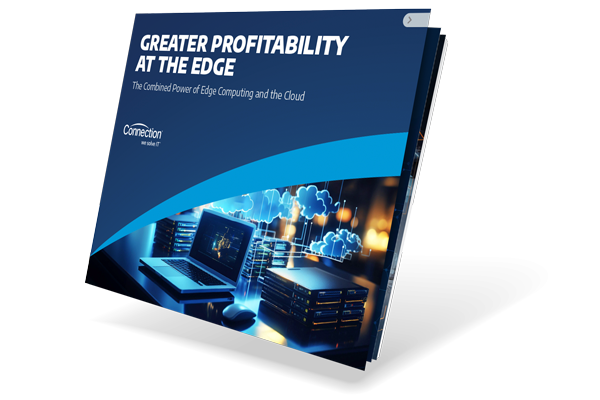
Connection Community
It’s All about the GPUs
GPU usage in the data center has been steadily growing for the past few years and now accounts for 46.1%... Read More
Edge Computing Is the Way of the Future
It’s estimated that a modern plant with 2,000 pieces of equipment can generate 2,200 terabytes of data a month. Processing... Read More
What Making Decisions at the Edge Means for...
We hear so much about computing moving to the edge. Predictions like 75% of data will be created and processed outside... Read More
Edge to Cloud: How Do We Get There from Here?
In industrial automation, we spend a lot of time focused on connecting things at the edge and doing something useful... Read More
How Edge Compute Is Redefining Automation in...
In manufacturing, edge computing is not new. Factories have long had compute solutions in the plant, including programmable logic controllers... Read More

